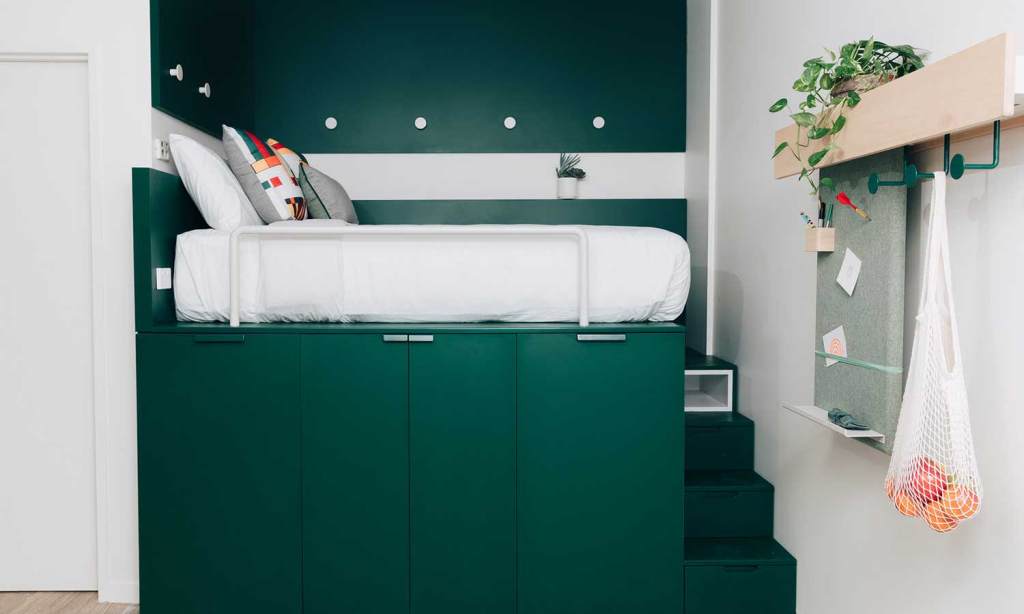Responding to urban densification and increasing house prices, a number of co-living apartment buildings have cropped up in cities around the world.
First emerging under the name co-housing in Denmark in the 1970s, the concept of co-living has reached Australia in more recent years, with the first-ever co-living space, UKO, opening in Sydney’s Stanmore in 2019.
Co-living is fast gaining popularity among young people, couples and travellers, but the arrangement is suitable to all who seek a more social way of living and working. The Guardian calls co-living “the end of urban loneliness”, and those who’ve gravitated towards the trend would surely agree.
What does co-living mean?
Well, co-living refers to a new type of rental arrangement that embraces a more connected and communal way of living by yourself, in tandem with others.
Whether long or short-term, renters will take up a small furnished apartment within a village-style complex that boasts a number of shared spaces, including communal kitchens, dining areas, working areas and rooftop spaces.
What is included in co-living
Co-living costs vary depending on location and apartment size, however, co-living spaces start from $400 a week with UKO. While perhaps more than one would pay in a share house for a room of a similar size, the inclusions are what make up the difference.
For starters, the architecturally designed studio or apartment comes fully furnished with smart furniture that maximises the storage and functionality of the space. The rooms come with a bedroom, a bathroom, a kitchenette, and a desk. All bills are included, along with an HD TV, bed linen, laundry service, and super high-speed WIFI (many UKO members work from home and require the facilities to do so).
Priceless, though, is the feeling of community and companionship that comes with the co-living arrangement. Renters are afforded the opportunity to mingle daily with like-minded individuals and can sit down to weekly cooked meals with fellow renters, or join in on movie nights, BBQs, free on-site yoga classes, even gin-making classes.
Usually, a co-living hub will have someone who works full time at the property — a ‘host’ as UKO calls them. Renters think of this person as something of a landlord or a housemother. It’s this person’s role to manage new residents and run the community events, but they’re thought of more as a friend and valuable member of the communities they manage.
View this post on Instagram
Co-living in Australia
Co-living is becoming more and more common as people catch on to the benefits of the modern-day arrangement.
In Sydney, UKO is perhaps the biggest player in the co-living space. The company currently operates five co-living hubs in Stanmore, Paddington, West Ryde and Newtown, but is currently designing and building seven more. These will pop up soon in suburbs like Surry Hills, Miranda, Redfern, and Alexandria.
Zuu Living is another company offering co-living arrangements.







